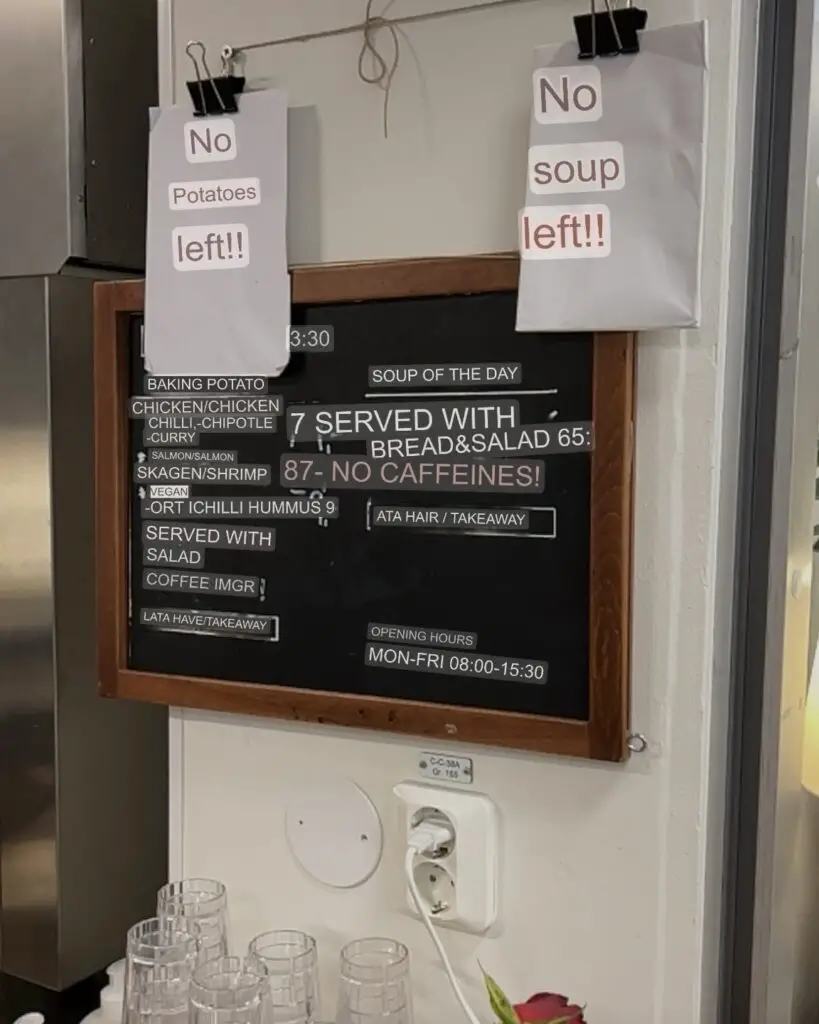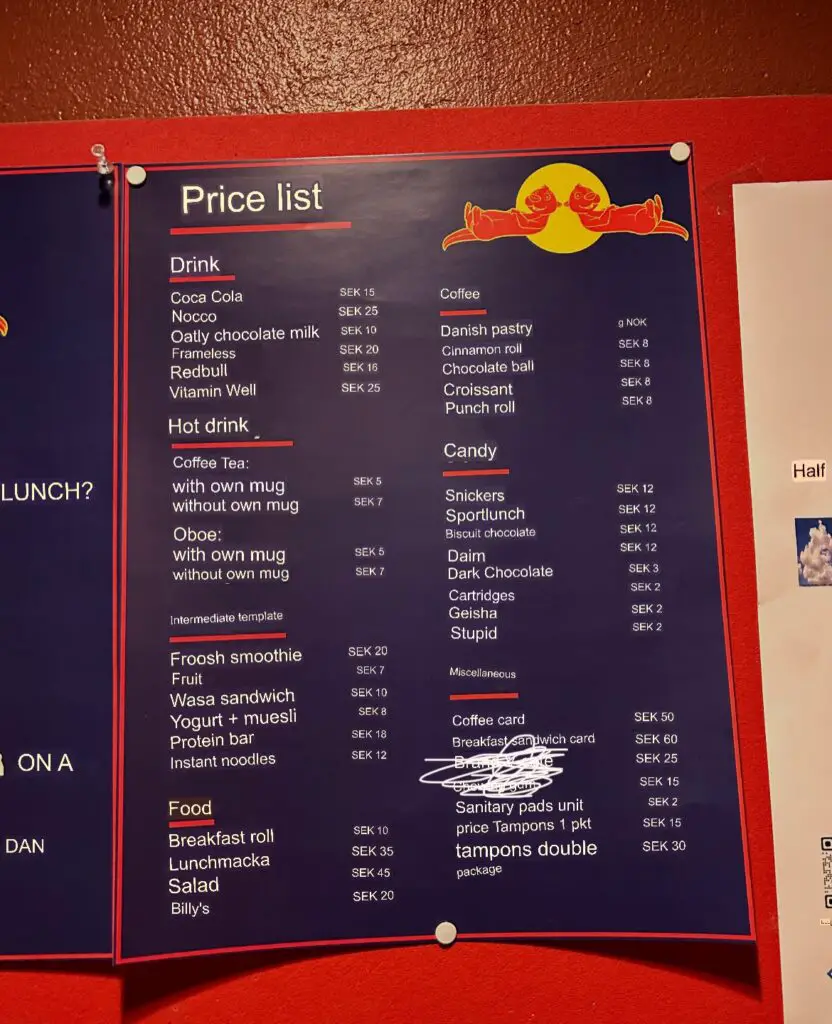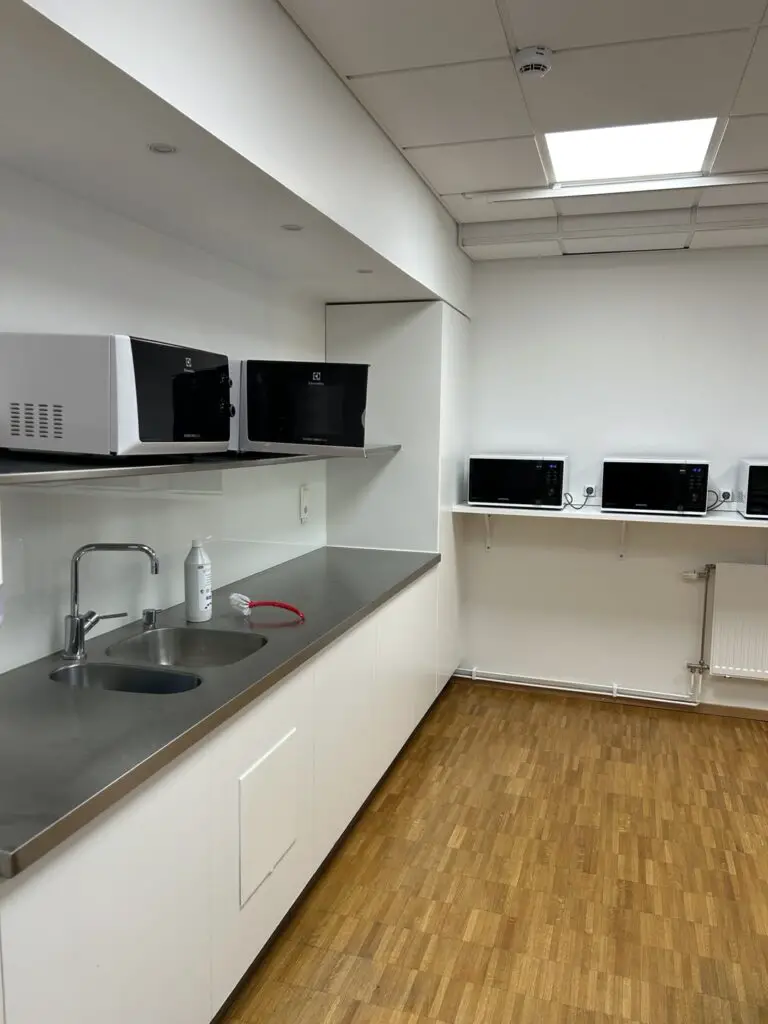As accustomed to a 24-hour restaurant culture and highly customer-oriented service, adjusting to life in Sweden was a big transition for me. Swedish culture, particularly when it comes to school lunches, presents a contrast to what I’m used to. Let’s explore how lunch is typically handled in Swedish university, and how it reflects broader cultural differences.
Simplified Menus and Self-Service Cafeterias
Swedish school cafeterias offer a mostly simple menus. The typical menu is limited to three main options: sandwiches, soup and salads. These meals generally cost between 60 and 120 SEK.

For those with a sweet tooth, there are simple desserts like oatmeal, yogurt with granola, and ready-made smoothies, alongside chocolates and candies. The drink selection includes Coke, energy drinks, orange juice, and coffee.
When it comes to ordering coffee you might feel a little puzzled since they just give you a paper cup. The coffee setup is entirely self-serve: grab a paper cup and pour your own coffee. Do they have latte options? of course! Though have to pour it yourself. They mostly have oat milk, lacto free milk. As a sweetener, add some sugar or honey as your choice.
Unfortunately, there is no option for iced drinks.. which was really sad for iced americano lover..(yeah that’s me)
Also interesting thing is that there is a café operated by students. Drinks and snacks are cheaper, and they give you a discount when you use your own mug!(There’s a place for storing own mug in school cafeteria) Amazing isn’t it?

The DIY Culture: Bring Your Own Lunch
One of the most striking aspects of Swedish school lunches is the prevalent DIY approach. Many students bring their own lunches, often in glass containers. It’s common to see students packing their meals in glassware, even if it means carrying a bit more weight. In this way they can microwave their meals in school, which are always equipped in school. This was a surprise to me, university student packing lunch? how diligent are they?
Campus Facilities: A Self-Sufficient Setup
Swedish campuses are equipped with large refrigerators where students store their lunches. When it’s time to eat, they heat their meals in communal kitchens, which often feature rooms filled with microwaves. After lunch, students can wash their dishes in dedicated sinks, reinforcing the DIY ethos.

This self-reliant approach—pack your own lunch, pour your own coffee, do your own dishes—reflects a big cultural difference from the customer-centric service model I’m used to in Korea. It embodies a broader Swedish cultural theme of self-sufficiency and minimalism.
Embracing Swedish Simplicity
Adjusting to the Swedish school lunch system has been both intriguing and challenging. The simplicity of the menus, the self-service setup, and the emphasis on bringing your own meals highlight a cultural focus on independence and sustainability. While it differs greatly from the convenience-oriented, consumer oriented food culture in Korea, it offers a refreshing perspective on efficiency and resourcefulness. Understanding these differences not only enriched my experience in Sweden but also broadened my appreciation for how cultures adapt to meet their needs in unique ways.
